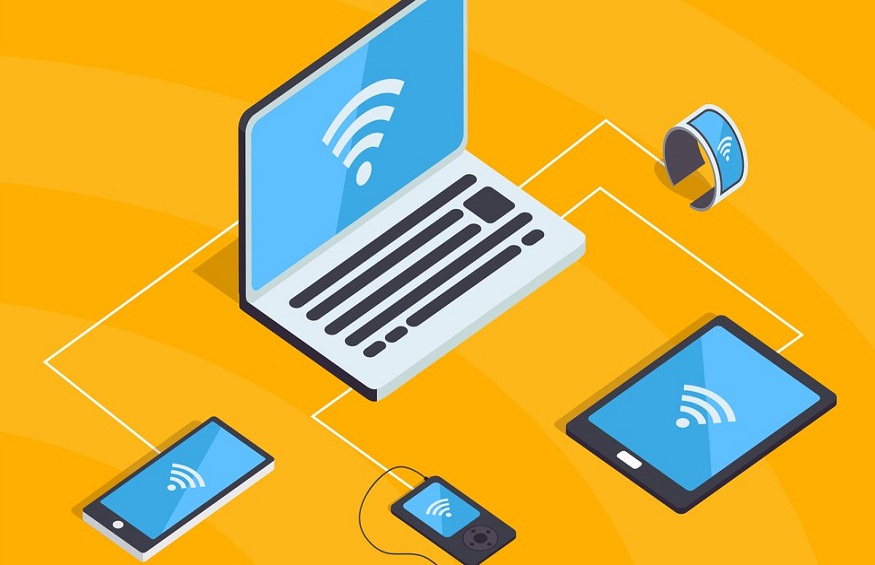What’s more irritating when you’re teleworking, studying remotely or simply want to play or watch a movie than a slow connection? So here’s how to solve the most common problems.
11 tips to improve your internet connection
Are you suffering from slow internet speed at home? As we spend more and more time at home, many connectivity issues can arise, especially when several people live under the same roof.
Connectivity drops, bottlenecks, delays in uploading and downloading content are common problems with home internet services, and it may not be your provider’s fault.
1. Evaluate your bandwidth
Make sure you have a plan that can handle all of today’s devices and their bandwidth demands. A minimum speed of 30 Mb/s is recommended.
Typically, you’ll need more bandwidth if you have multiple devices and streaming services in use. Your internet service provider may have imposed a throttling on your service if you are considered to be using “too much” bandwidth – if this is the case you will need to call your service provider. You may also need to renegotiate your plan, upgrade it, or, if you’re not getting a good deal, switch providers altogether.
2. Check your speed
If you’re already on a broadband plan and there’s no reason for you to suffer from slow speeds because of what you’re paying for, check out ZDNet’s Speedtest or Speedtest . net and Fast.com for real-time analysis of your connection. These free services will ping and check your download and upload speeds.
If you pay for a plan of up to 30 Mbps and only receive speeds of 2 or 3 Mbps, for example, it may be a problem with your internet service provider (ISP). At this point, it is worth checking with your provider if there is an outage in the area. To do this, simply type the name of your ISP and the word “outage” into a search engine or visit its website. You can also ask your neighbors if they are having problems.
However, if it’s just a specific online service that’s giving you trouble, go to Down for everyone or just me , type in the address, and check if your slow speed or failure to connect to a domain is a problem or an outage. a third. Sometimes the inability to access web domains is not the fault of your service, but rather the ISPs or content delivery networks (CDNs). For example, Fastly made large swaths of the web inaccessible due to an outage in June 2021 .
3. Reset your router
Sometimes the simplest explanation is the right one. If your connection speed is suffering, try unplugging your router, leaving it off for about 10 seconds, then restarting it. Just like a PC sometimes needs a refresh, routers sometimes need it too.
4. Check the location of your router
There are two general categories of hardware used to connect your home: a traditional router or a mesh network (unless you rely on a mobile device and a 3G/4G/5G cellular setup).
Traditional routers act as a central hub to connect you to your ISP. These routers manage traffic through a single access point.
In comparison, mesh networks are new entrants to the market that create a network of nodes for internet access. Instead of each home device connecting to a router, these products include a hub and nodes that can be distributed to different areas of your home, and the devices connect to the nearest physical node to access the web.
If you’re using traditional hardware, like a default router provided by your ISP, you need to remember that the further away you are, the greater the risk of connection issues, slow speeds, and interruptions. A simple solution is to move your router – perhaps closer to your office – or invest in a Wi-Fi extender to increase signal strength.
Certain objects can also obstruct connections between your devices and a router. Where possible, try to keep the clutter around your router to a minimum.
5. Consider a mesh network
Larger properties or home offices located in a garden or courtyard may simply not be served by a centralized internet hub. If so, moving your router won’t be enough, and it may be time to consider a mesh network instead.
Both categories can offer reasonable speeds, but mesh networks tend to sacrifice some speed for better connectivity. If you need high-speed direct connections for streaming, gaming, and power-hungry business applications, an upgrade to your standard router is a worthwhile investment and will likely perform better than a networked installation. The default router typically provided by an Internet Service Provider may simply not meet the bandwidth needs of today’s homes.
It’s also worth noting that you can combine a router with a LAN cable if you want a stable and fast connection for a PC in a room, as well as wireless connectivity in general.
There’s also no point signing up for a high-speed internet plan if your old hardware can’t support it. So you also need to consider the age of your router if slowness is a problem.
6. Check your wiring
Something that can be overlooked, but can cause connectivity or speed issues, is the cabling connecting your router to a switch, phone jack, or PC. If your wires are old, you might consider refreshing them and replacing the old ADSL/Ethernet wires and see if that fixes the problem.

